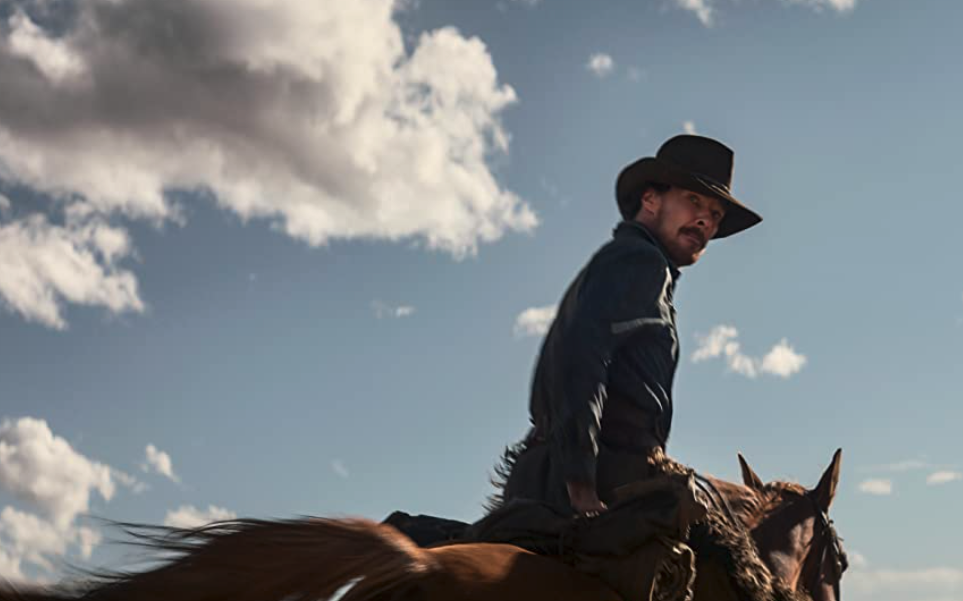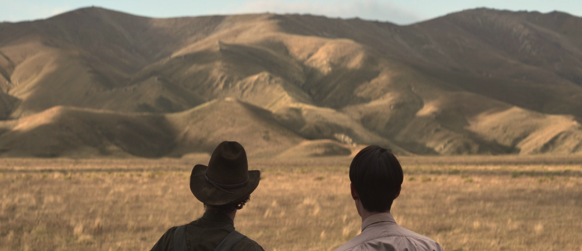Film Review: The Power of the Dog sings bleak poetry in sparse landscape
Moving PIctures a Column By Mo Burford
Movie Review
Hands at work, their toughness and frailty, what they let in and what they keep out. The hands that love you and the hands that betray you. Hands in deerskin gloves. The delicate hands of the son. The gloved hands of the brother. These are the hands ever present to their conditions, to their worries; the hands that betray their anxiety, that let in and that keep out.
Jane Campion’s most recent film, and her first in ten years, The Power of the Dog is at its center a reevaluation of the myth of the old west, and with it the myth of masculinity that follows in its shadow, carving a hole in the center of each character’s life. As a result, the film is deeply lonely, contrasted by the lush, sweeping cinematography of Ari Wegner and the affecting score by Johnny Greenwood.
It is a film of contradictions, ambiguities and characters who are not easily pigeonholed.
Set in 1925 Montana–though filmed in New Zealand–where wealthy ranch-owning brothers Phil (Benedict Cumberbatch) and George (Jesse Plemmons) Burbank meet widow and inn owner Rose Gordon (Kirsten Dunst) during a cattle drive. George is quickly taken with Rose, while the volatile Phil, influenced by "Bronco" Henry, his late mentor, mocks Rose's son Peter (Kodi Smit-Mcphee) for his lisp. George and Rose are wed, and what follows is a meditation on connection, masculinity, loneliness and the fraught connection between humanity and nature.
While the movie begins at a slower pace, it quickly builds momentum as it adds layer after layer of complexity onto each character, creating an ever-shifting kaleidoscope of moral and emotional states. Characters experience profound inner turmoil that simmers beneath the surface of even the earliest sequences. It strikes me as incredibly brave, in a genre full of easy villains and cookie-cutter heroes, to have a film with so much ambiguity around the characters’ motivations and actions. Is Phil Burbank–covered head to toe in dirt and grime–a heartless tyrant, or a lonely and misunderstood misanthrope? And further, what does it mean if he’s both? When every character has experienced painful losses and emotional harm, which one do we call the hero, and which the villain?
The sparse inner landscape of the film is matched by a script meticulously pared down, like a bonsai tree, until it sings a bleak poetry. The internal states of these characters are deftly portrayed in the actors' physicality, expressed more in a look or a movement–the taut braiding of a rope, the softness of gloves against skin, the cutting of flesh–than in a word. The camera’s eye does much of the work, showing not only the anguish or sadistic satisfaction on the faces and bodies of its characters, but putting them next to the desolate beauty of the Montana landscape, thus expressing the themes of loneliness and repression without overstating them.
All of this is really to say: Jane Campion is a master filmmaker and the breadth and depth of her powers are on full display in every scene in Power of the Dog.
My only complaint is that I didn’t see it in a theater. Like most folks probably will, I saw it at home and feel like I missed some of the impact those landscapes would have had on a big screen, scenes Campion clearly intended to feature on a grand scale. The movie has already won high praise: from Best Picture and Best Director at the Golden globes, the New York Critic Circles award for Best Director and the AFI film of the year, along with many awards to the cast. So here’s to its Oscar bid and perhaps a second chance to see it on the big screen!
★★★★★
(Five out of Five Stars)
The Power of the Dog is available to stream on Netflix and in select theaters.
To learn more about CCCNew’s newest columnist Mo Burford, click here.



